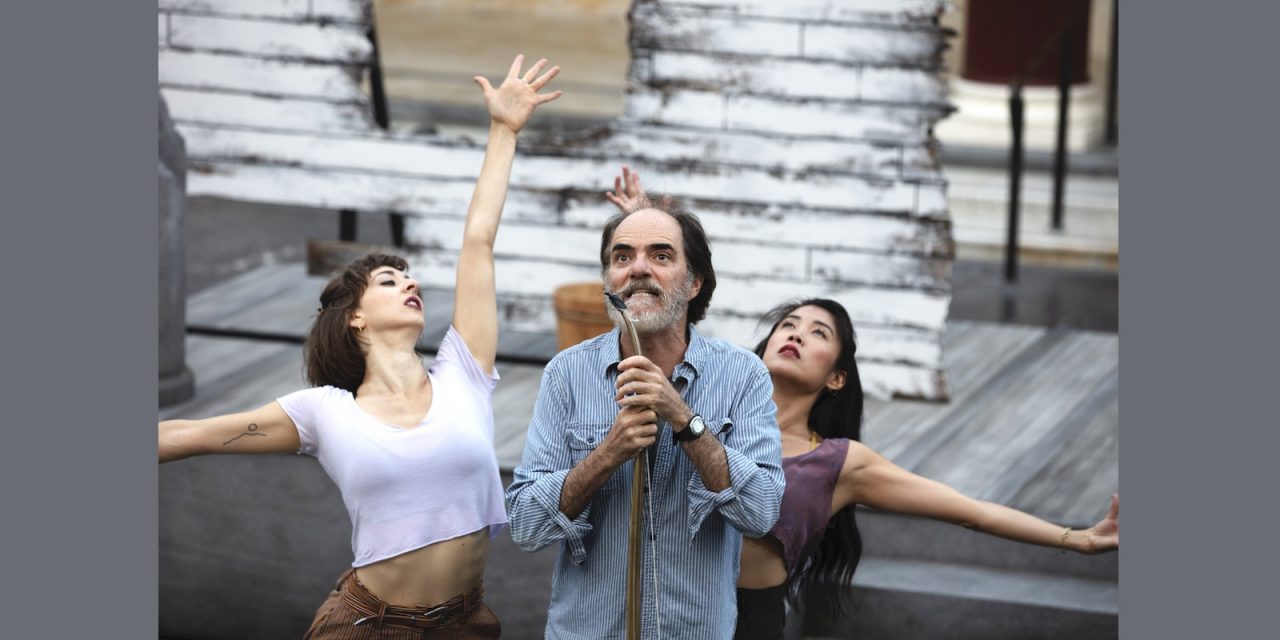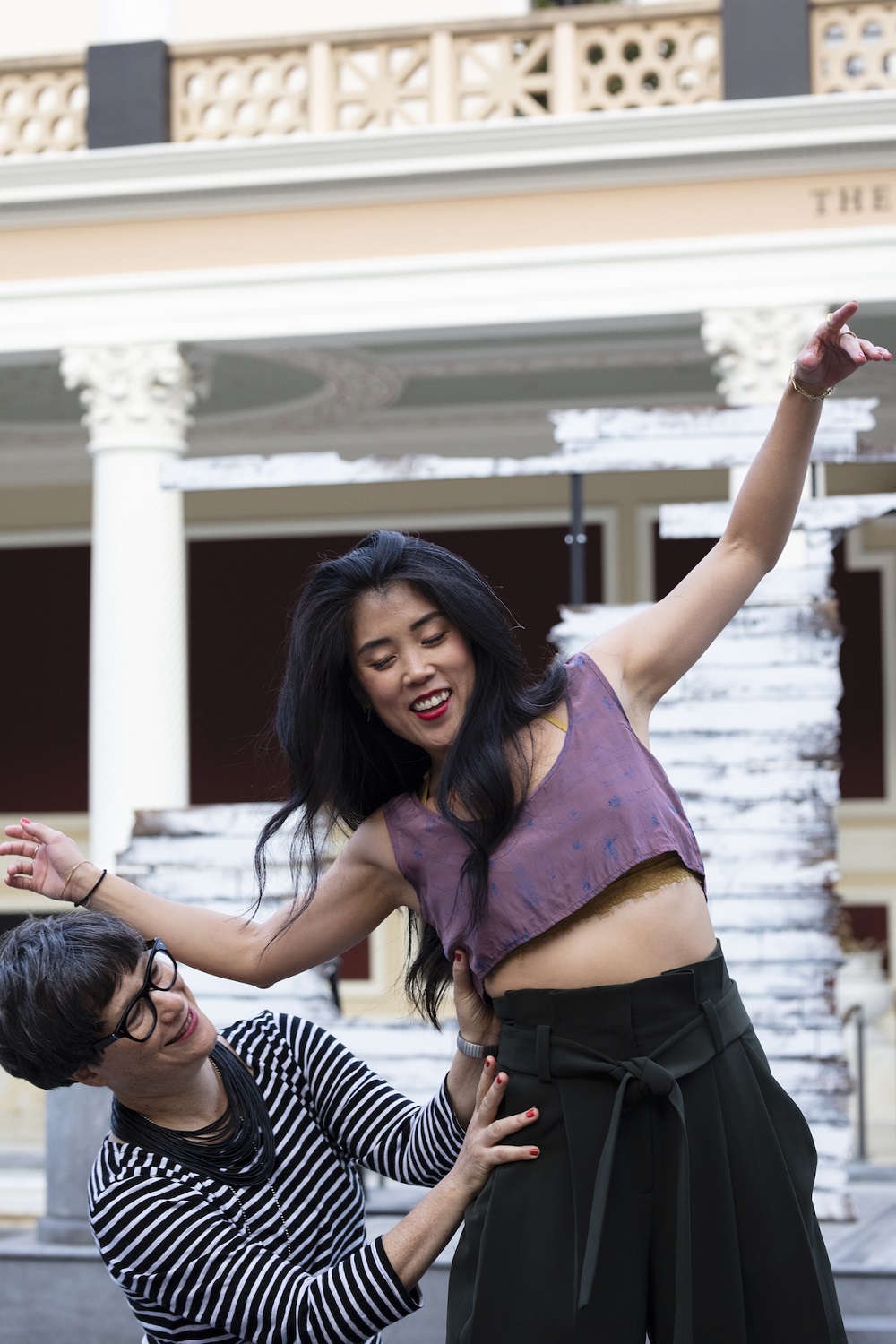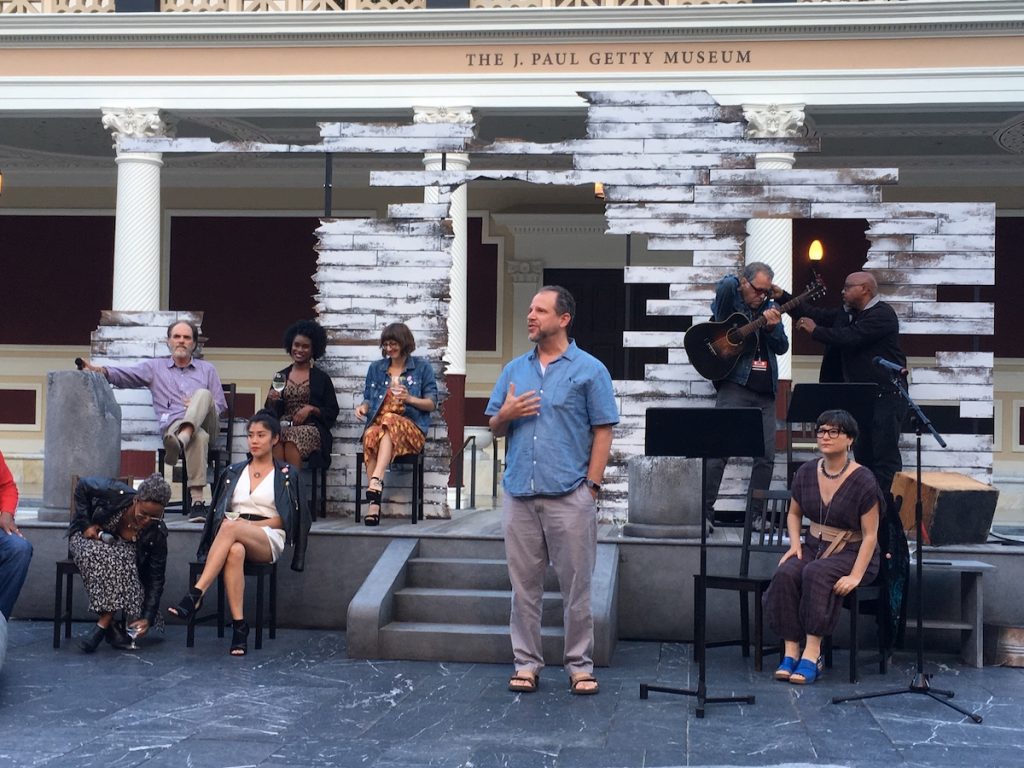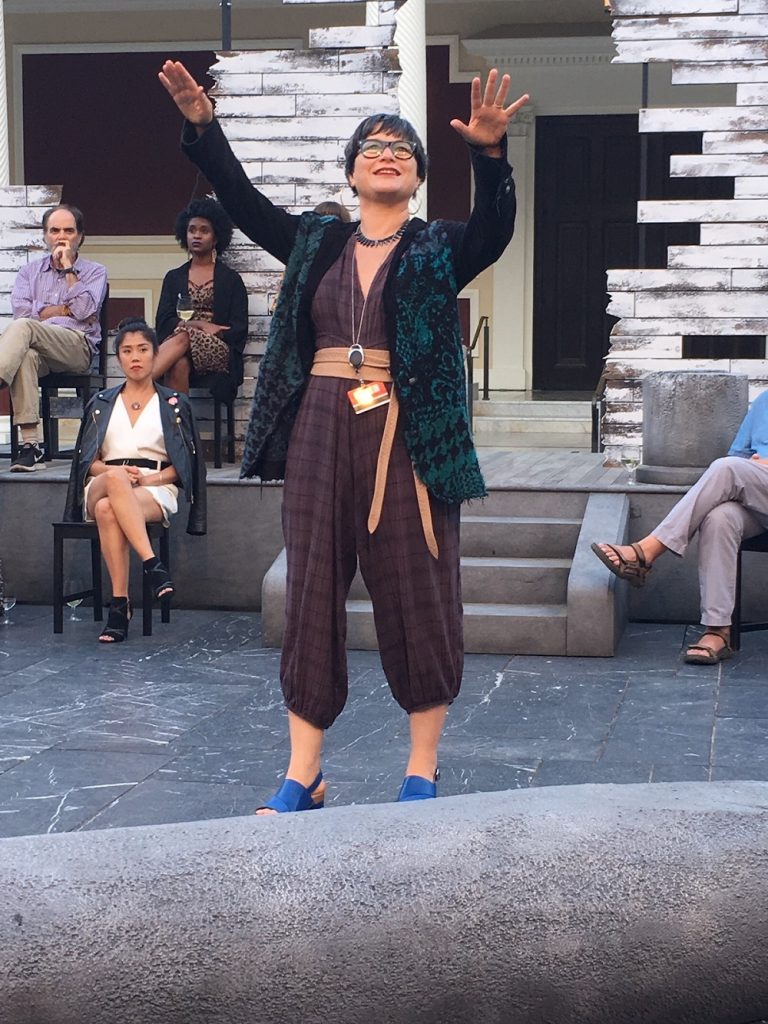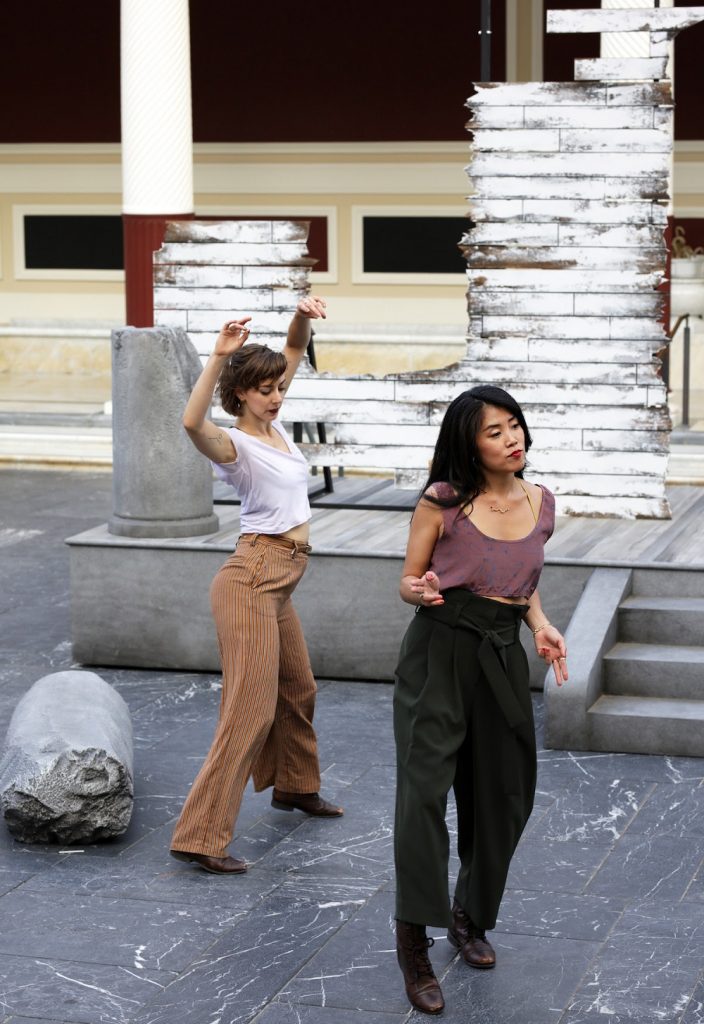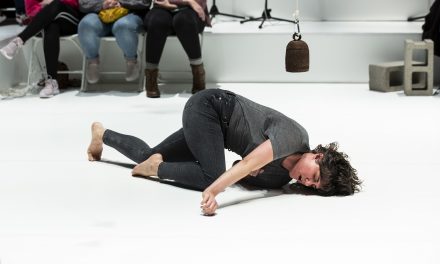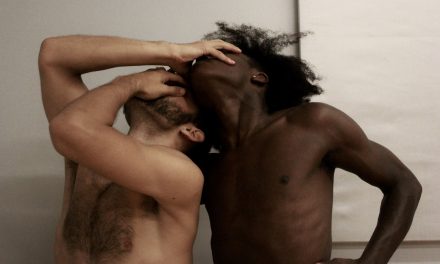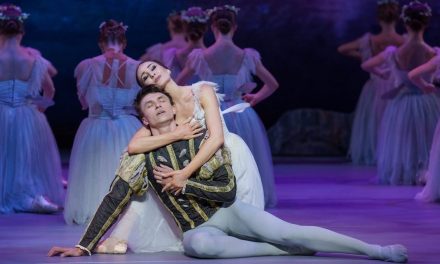Choreographer Erika Chong Shuch has traded the fog of her San Francisco home base for the sunshine of Malibu, but she’s not on vacation. Here with director/playwright Aaron Posner, she’s augmenting his words with movement for the performers in the Getty’s month-long, outdoor amphitheater presentation, Posner’s reconsideration of Sophocles’ Philoctetes. This lesser known Sophocles play written in war-weary Greece 2400 years ago was the starting point for The Heal, described as “inspired by Sophocles”. At a press preview the day after the cast’s first look at the amphitheater, Shuch and Posner talked about this riff on Sophocles’ original and the role choreography plays in this new staging.
The Heal is not a musical with distinct dance numbers although there are transitions that are danced by “the chorus”, three muses and Cliff Eberhardt who plays his songs live. After working together on 20 plays over 25 years, Shuch sees her choreographer role when Posner is the director as going beyond creating steps.
“My job is to weave in elements and suggest how to amplify the actors’ inclinations to better articulate the story,” Shuch says. “I watch for their physical impulses in rehearsal and then take it to something stylized. It’s their gesture or movement, just taken to a larger font.”
While Oedipus and his family’s travails are the best known of his seven surviving plays, Sophocles wrote 120 plays and won first prize for most (second prize for the rest) at the public competitions performed for the Athens’ populace.
In addition to his plays, the long-lived Sophocles was a general, worked to reinstate democracy after an oligarchy, and Philoctetes was written a few years before his death and at a time Greece was mired in a disastrous Peloponnesian War that had devastated Greece.
The protagonist is not to be confused with the grouchy half-satyr in Disney’s Hercules. This Philoctetes is the son of a king and once a warrior hero but after he was bitten by an enchanted snake, Odysseus and the crew could not stand the stench of the festering wound and Philoctetes’ painful screams. Odysseus abandoned him on an island leaving Philoctetes with little more than his pain and a magical bow and arrows given to him by Hercules a decade before the play opens. That back story gets summarized early in the play when Odysseus explains that he has returned to the island ten years later because an oracle says the war only will end with that bow and the arrows. Odysseus arrives on the island with the adult child of Achilles to whom he recounts the story as part of his efforts to persuade Achilles’ child to deceive Philoctetes to gain the bow to win the war.
Despite his changes contemporizing some elements in the story, Posner sought to retain the impulse in the issues Sophocles raised. “How do you move forward when you have done wrong, when others have gone wrong to you, and when you have done wrong to yourself?” Posner admits classical scholars may parse his choice of contemporary language and changing the child of Achilles from a young man to a young woman which brings another layer of issues to the three-way conflict and the issues of what is right and wrong in times of war. While Sophocles eventually evoked Hercules back from the dead to tell the characters what they must do, Posner wanted Odysseus, Philoctetes and Achilles’ daughter Nia to figure it out themselves.
And the title The Heal? Posner chuckles, admitting it references both the issue of healing and the fact both Achilles and Philoctetes are wounded in their heels.
Such word play is a hallmark of Posner’s oeuvre which includes irreverent adaptations of several Chekov plays. Uncle Vanya became Life Sucks; The Seagull emerged as That Stupid Fucking Bird. Known for his contemporary perspective on classics including Shakespeare’s The Tempest and MacBeth, Posner’s collaborators have included musician Tom Waits, Teller of Penn & Teller, and a member of the gymnastic/modern dance company Pilobolus.
Posner’s selection is consistent with the Getty’s practice of offering productions with modern entry points while retaining the marrow of the classical plays, bringing new life to ancient characters represented in the art collection on display in the nearby galleries.
Shuch expected to adapt the movement once they arrived at the Getty. She admitted she was prepared for generating large movement to occupy the amphitheater space. Just as the Getty’s amphitheater was designed acoustically for the actors, she has found it also provides a visual focus that allows for a cocked eyebrow to be read by the audience. “What we’ve found is the things that are most effective are intricate unison sections with opinionated vocabulary.”
The play has a promise of an extended life starting next spring. Developed as a co-production with the Tony-award winning Round House Theater in Bethesda, Maryland, The Heal is part of that theater’s spring season. Getty Villa, 17985 Pacific Coast Hwy., Malibu; Thurs.-Sat., thru Sept. 28, 8 p.m., $42. https://getty.edu.
Written by Ann Haskins, September 12, 2019
Featured image: The Heal – Photo Courtesy of the Getty Center.

